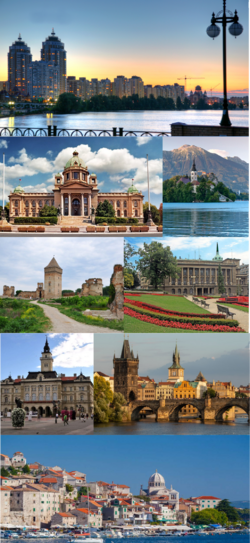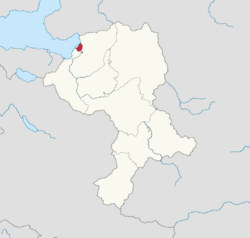Algrade
Algrade | |
|---|---|
Capital of Krovech | |
 Clockwise from top: Skyline view across the Diemka, Manilla Tower, Algrad Dvor, Norodov Bridge, Coasts of Algrade, Marin Cathedral, Algrade Ruins and National Assembly | |
| Motto(s): "Endure and Persevere." | |
 Location of Algrade (red) in Krovech | |
| Settled by Leonic tribes | 6th century |
| Government | |
| • Type | Mayor-Council |
| • Body | City Assembly |
| • Governing Mayor | Adna Monika |
| Population | |
| • Capital of Krovech | 3,428,763 |
| • Density | 2,826/km2 (7,320/sq mi) |
| • Urban | 1,831,462 |
| • Metro | 2,463,791 |
| Demonym | Algrader |
| Time zone | +UTC 2 |
| Website | .algrade |
Algrade is the capital and largest city of Krovech at the population of 3,428,763 inhabitants. Algrade is one of many autonomous districts in Krovech and is situated on the Diemka River. It is one of the few regions that offer a coastline and is lead as a economic, political and cultural center of Krovech known for it's scenery, arts, architecture sites such as the Marin Cathedral and Norodov Bridge and figures off it's academic institutions.
The city was first settled by Leonic tribes in the 6th century by the Diemka as a seafaring and maritime settlement, later in the 12th century and incorporated into the Bortis dynasty it later experienced the Alydianization of the kingdom and was set as a vital spot for trade shared by the Arstensk. The capital moved to Algrade away from Boletck as an economic and cultural center of the modernizing Krovech. It still stood as the current capital when the Krovak revolution occurred despite it's symbolic monarchical importance.
Algrade houses the government of Krovech and is the home to many industries and companies with metro systems, domestic and international airports, and sets a transition with it's historical and cultural coastal buildings in contrast to financial cityscapes.

